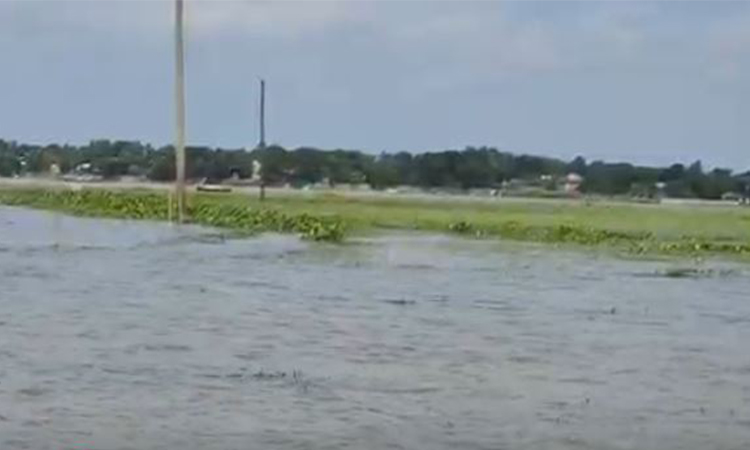News Flash

KISHOREGANJ, Sept 8, 2025 (BSS) - Once a shimmering cradle of biodiversity, the haors in the district are now stands at a critical crossroads as those are witnessing a gradual disappearance of indigenous and flavorful fish species.
Renowned for their rich yields of rice and freshwater fish, these wetlands have long symbolized the Bengali ethos captured in the proverb "Maachhe Bhaate Bangali", a reflection of the nation's cultural and nutritional heritage.
Spanning the northeastern reaches of Bangladesh, the haor basin has traditionally served as a vital reservoir of indigenous freshwater fish species.
However, fish habitats in the haor region are rapidly deteriorating due to reduced river navigability, drying wetlands, biodiversity loss, climate change, human-induced disasters, and illegal fishing.
Additional threats include excessive chemical use in agriculture, water scarcity, absence of sanctuaries, blocked habitat channels, and indiscriminate use of illegal nets and pesticides.
The haor region, encompassing 423 haors, water bodies, and wetlands across 25 upazilas in seven northeastern districts, includes 28,000 government water bodies and 6,300 beels, covering approximately 858,460 hectares.
At one time, nearly 300 species of freshwater fish thrived in this region. Even today, fish produced in the haor meet local demand and are exported abroad annually. But, due to climate change and various human-induced factors, this vast fish reserve now faces serious threats.
According to the local Department of Fisheries and fishermen, the haor region once served as a habitat for around 260 species of freshwater fish and 24 species of delicious shrimp. These valuable aquatic resources are vanishing due to adverse climate impacts, man-made disasters, declining river depth, and illegal fishing practices.
Meanwhile, over fifty species have become extinct, and many others are on the brink, while numerous species are now endangered, raising deep concern among the haor communities about the future of indigenous fish, they noted.
Local residents and fishermen have voiced that without a joint initiative and strategic plan from the Department of Fisheries and fishing communities, the rare freshwater species will be irreparably harmed.
Fisheries experts believe that in the past two decades, 20 species have gone extinct.
They said excessive use of chemical fertilizers in agricultural lands, water scarcity in reservoirs, lack of fish sanctuaries, blockage of channels leading to fish habitats, indiscriminate use of illegal nets and pesticides, and the adverse effects on biodiversity are all contributing to the crisis.
Ultimately, both natural and human causes are obstructing the reproduction of indigenous fish, they opined, adding that nevertheless, the Department of Fisheries is working to restore the extinct native species.
Md. Shahidul Islam, District Fisheries Officer, Kishoreganj said due to river sedimentation, fish movement and breeding grounds are shrinking.
Sanctuaries must be established for brood fish in breeding areas, and fishing should be prohibited during specific periods, he said, adding that during the monsoon, fry should be released upstream.
He also stressed that the administration must take urgent action to protect rivers, brood fish, and fry from illegal nets and influential leaseholders.